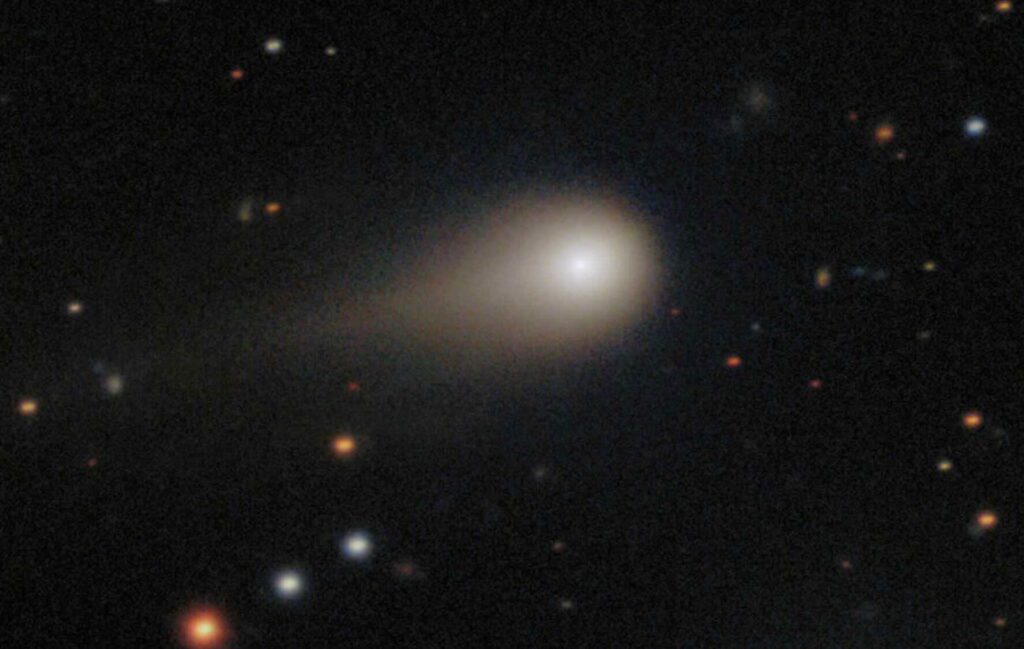The interstellar comet 3i/Atlas, discovered in July, is believed to be exceptionally large, significantly exceeding the size of previous interstellar objects like Oumuamua. New research using precise tracking data reveals that 3i/Atlas could have a minimum diameter of about 5 kilometers (over 3 miles) and a mass of approximately 33 billion tons. Observations indicate it is experiencing some nongravity acceleration, likely due to gas jets from its surface heated by the sun.
Data from the James Webb Space Telescope suggests a mass loss of about 150 kilograms per second, reinforcing the comet’s significant size. The research team, led by Avi Loeb, compared optical measurements from over 227 observatories and found minimal deviations from predicted gravity-based paths, solidifying the conclusion of its large mass.
Despite some unusual properties, such as the detection of nickel—typically found in industrial alloys—most astronomers, including NASA’s Tom Statler, affirm that 3i/Atlas behaves like a comet. Ongoing observations from Mars and Jupiter may provide further insights, pushing scientists to rethink current models of interstellar object populations. The findings, detailed in a paper available from the Harvard & Smithsonian Center for Astrophysics, raise questions about the nature of such massive objects in space.
Source link


